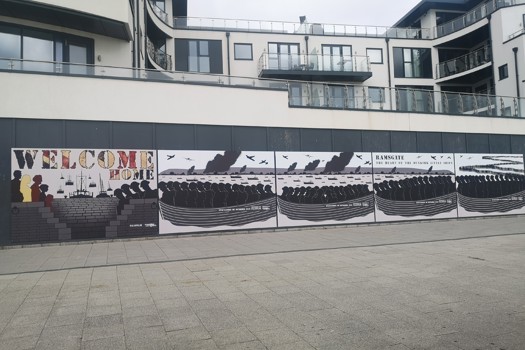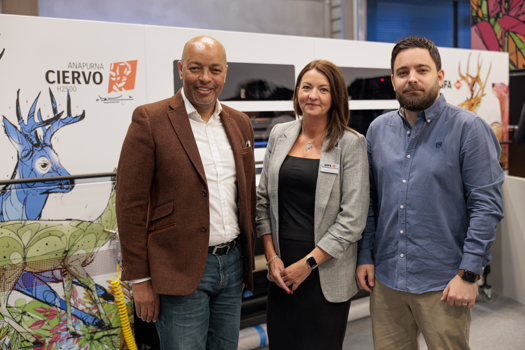What does it do?
This is a manually fed laser finisher that handles cutting, creasing perforating and engraving in one operation. It’s suitable for use with paper, cartonboard, wood and plastic, up to B2-plus formats.
This is the first laser cutter from Polar, the German manufacturer best known for its guillotines.
According to Paul Thompson, manager for Polar products at distributor Heidelberg UK, applications include greetings cards, folders, cartons, letterheads, name cards. table cards, lanterns and bookmarks.
When was it launched and what market is it aimed at?
It was announced in May 2015. A relatively modest cost compared to auto-loading laser devices means its target markets include commercial, digital and packaging printers, POS shops and design studios.
It’s intended for short runs up to about 500 items, depending on the job type. The big attraction of any laser cutter is that it doesn’t need expensive metal dies to be ordered and made ready in advance. There is in effect no makeready as the set-up is contained within the artwork. Future models may be more ambitious. Markus Rall, managing director of Polar, says: “We expect to announce further developments at Drupa. We think this first product offers printers a chance to differentiate without a large capital expenditure or tooling costs.”
How does it work?
As a laser cutter, it vaporises material by the absorption of energy from an intense, narrow and focused light beam. The power can be tuned from 0%-100%, to cut all the way through the material, or only partway through to produce scoring or etched patterns. As the material is completely vapourised in narrow cuts, this means that very delicate filigree patterns can be produced that would be difficult or impossible with conventional metal diecutting techniques.
The laser can be set to vapourise just the ink from a printed surface to leave clean substrate, thus allowing variable data to be added. It can also create variable perforations including unique security patterns.
The laser head is mounted in an enclosed cabinet, operating on both X and Y axes. A built-in extractor removes exhaust gases, which are filtered and released into the ambient air.
The media to be cut is mounted onto the honeycomb cutting table and removed by hand afterwards. “Positioning of the material is a manual operation, it is not set via a sensor.” Thompson explains. “Aligning in X-direction can either be done by manually positioning the material to zero-point or by manually positioning the laser head on a reference mark via red dot laser.”
Input is from third-party vector drawing software, such as illustrator or CorelDraw. Multiple layers can be created to define cuts and partial cuts.
How productive is it?
As with any laser cutter, throughput depends on the material and the complexity of the laser line. The laser cuts at a maximum of 2m per second.
What’s its USP?
This is the first laser cutter from Polar, but the firm has a strong reputation in the finishing sector, with sales, service and support via Heidelberg in the UK. On the technical side, it has a cooled CO2 laser encased in a metal tube. Glass tubes run the risk of shattering, says Polar. It has been certified by GS sign, an independent evaluator of safety regulations in Germany, which applies tougher tests than the CE regulator.
How easy is it to use?
“Operation of the actual device is very simple, one day of instruction would be sufficient,” says Thompson.
What training and support is on offer?
Service, training and technical support will be provided by Heidelberg UK, with support from Polar.
How much does it cost?
Starting price is just under £40,000.
How many are installed?
The first installations will be in Germany in September. “We hope to have one in the UK showroom for the Heidelberg UK autumn open house on 11 and 12 November,” says Thompson.
SPECIFICATIONS
Laser 30W sealed CO2, air-cooled
Max speed 2m/second
Work area 860x610mm
Software Multi-layer vector type (eg Adobe Illustrator or CorelDraw)
Footprint 1.4x0.9m
Price From £40,000
Contact Heidelberg UK 020 8490 3500 www.uk.heidelberg.com
ALTERNATIVES
LasX LaserSharp B2
LasX’s range of laser cutters include the LaserSharp B2 autoloading moving-transport model and the larger 1,200x1,200mm manually fed LaserSharp XY (from £142,000).
Laser up to four CO2 lasers (100, 400 or 1,000W)
Max speed 12m/sec with 400W laser
Max sheet width 508mm (any length, other widths available)
Footprint 2.6x2.1m
Price From £125,000 to £436,000
Contact LasX Europe +49 511515 41190 www.lasx.eu
Themediahouse motioncutter
A compact laser cutting system with a moving transport belt and one or more laser heads with a choice of power levels. It’s intended for autoloading but a side door allows manual loading for one-offs.
Laser 230W CO2 (400W optional)
Max speed 8m/second
Max sheet width 580mm (any length)
Footprint 2.5x1.5m
Price £164,000 (£175,000 with 400W)
Contact themediahouse 01993 844016 www.motioncutter.com
Trotec SpeedMarkerGS
This is a compact laser cutter that can start with manual feed and optionally be fitted with a flat pile feeder and post-cut stacker. The working area is smaller than the Digicut but the laser is more powerful and faster.
Laser 100W sealed CO2, water-cooled 3-axis
Max speed 9m/second
Work area 500x500mm
Footprint 1x1.6x1.99m
Price £42,780 to £142,600, depending on spec
Contact Trotec Laser 0191 580 1184 www.troteclaser.co.uk
USER REVIEW
“I am really fascinated by the fields of application the Digicut provides. We can make many new products, which allows me to offer my customers an added value”
Jürgen Schweikert Schweikert Druck, Obersulm, Germany










